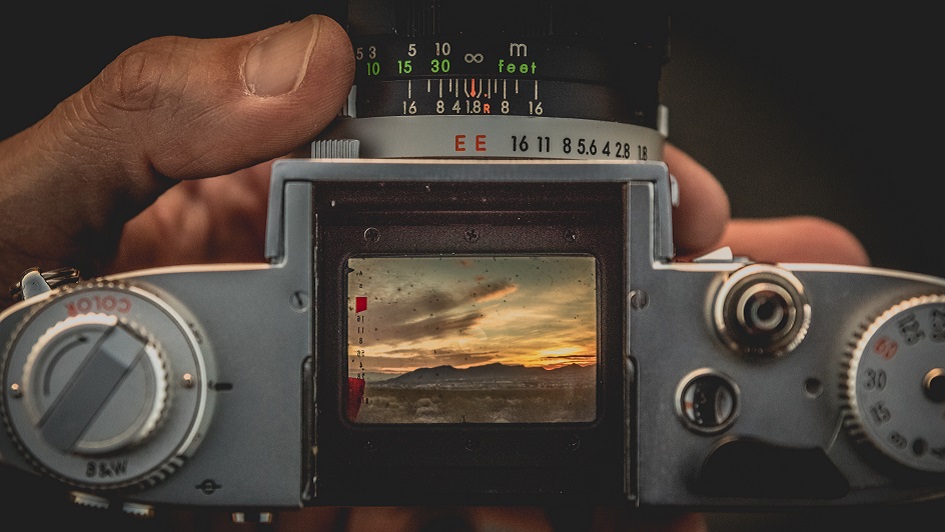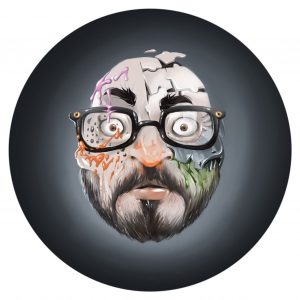
Ten years in the Saudi market has taught our recent interviewee, Loui Kofiah, a bit about how creativity is blooming in the Middle East. As creative director of TBWA\FULLSTOP., Loui dabbles in various aspects of illustration, graphic design, gaming – calling himself a “mad scientist of sorts” when it comes to his artistic tendencies. His focus on everything from online collaborations to art projects, and laudable work applying design-centric approaches to brand solutions, is what prompted us to ask him to share his insights with us after his most recent talk at Dubai Lynx.
Brandingmag: You’ve worked in various industries as an artist, designer, and (now) director. Does the perception of creativity differ as you shift from company to company? If so, then what are some of those differences?
 Loui Kofiah: Not necessarily. All ideas operate with a certain creative core to it that would make it work as a painting, a poster, or even a headline. Whatever the creative intent is, it’s only the outcomes and the affordability that changes. If the outcome is true to where it came from, it’ll be perceived as “creative.” Sure, some people will not be able to make the link, but that doesn’t mean it doesn’t exist.
Loui Kofiah: Not necessarily. All ideas operate with a certain creative core to it that would make it work as a painting, a poster, or even a headline. Whatever the creative intent is, it’s only the outcomes and the affordability that changes. If the outcome is true to where it came from, it’ll be perceived as “creative.” Sure, some people will not be able to make the link, but that doesn’t mean it doesn’t exist.
Bm: Has the role of “the creative” evolved in the MENA region throughout your career?
LK: In a way, yes. Creativity is commonly linked to certain modes of expressions, like art (print, motion) and literature, and tend be exclusive to those modes in terms of how we evaluate who’s creative and who’s not. However, with more battleground for ideas to compete for attention, the need to stand out is a strong evolution incentive, and it pushes us to be more creative with those ideas.
Art, movies, music, posters, kiosks, apps, web services, you name it…
Bm: What is your take on the advantages and disadvantages of being part of a creative agency versus being a creative on the brand side?
LK: That’s a bit tricky. Both have very subjective advantages and disadvantages. I guess it depends on how you want to explore your career.
Some like to experiment with different industries, different audiences, and try out different ideas and communications. And some like to focus on a specific industry, a specific audience, and just excel in the standards that you can reach with its communication.
Bm: As a brand manager (either on the agency or client side), is there an optimal amount of time that one should work on the same brand before making a change? Is there a moment when coming up with fresh ideas for the same brand becomes more and more difficult?
LK: For a single creative, of course. But a creative collective allows the exploration of an idea from multiple angles and keeps the creative outcome on-going.
It can still be led by a single creative, but it’ll operate on multiple perspectives, multiple points of input, and multiple possibilities for creativity to come out.
Bm: How has the role of the brand book changed over recent years? What roles do today’s brand books play when it comes to your work?
LK: For me, the role of the brand book barely changed. It’s a client-approved crayon box that you can color your ideas with. It can be limiting at times, and when that happens, the client needs to buy more crayons…
Bm: Do you often find yourself surpassing or ignoring brand book rules for the sake of your creative ideas? If so, then why?
LK: Well, brand books change with time. The media, the guidelines on how to use media, are ever-changing. So, there’s always the need to update brand books to match current messages or needs. More often than not, it’s the creative idea that leads that change.
We’ve had our fair share of clients who were very resistant to change, in which case we started looking for loopholes or lured them into a creative trap by doing a side-by-side comparison. Doesn’t work every single time, but doesn’t hurt to try.
Bm: What are some of your favorite industries or brands that you’ve worked with and why?
LK: Video games, automotive, and insurance. They target the most active demographics, and they allow expression to be as “relevant” as possible, which is also code for awesome concepts.
Bm: In which industries do you see the most creative innovation occurring when it comes to your region?
LK: Automotive and the entertainment industry. Both are new to the shifting paradigm of Saudi youth, and both need to be as close-to-the-heart as possible.
Bm: What role does society and culture play in the work that you do? How do you find your environment affecting your everyday job?
LK: A direct role because we need to always speak to what’s real. Idealism in advertising – the happy family or the perfect product – is finally changing into something that is real. With all the flaws and insecurities that “real” entails.
Bm: Can you break down the MENA region a bit when it comes to our industry? What are some of the differences between the various countries that make up this evolving market?
LK: Countries that have an active film industry, like North Africa and some countries in the Middle East, tend to have ads and print campaigns that are pushing the envelope. The audience is tried and tested, so what can you do with that audience is something that is always exciting. Other countries, including my home country, are catching up.
This may be subjective to ads and branded content, but it’s the area that most of us see on TV’s and YouTube ads. Print material is already trying out new realms, and that’s mainly because of the Internet.
Cover image: Ryan Hafey
